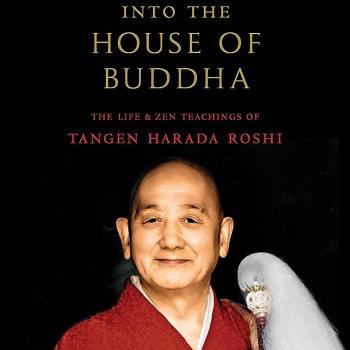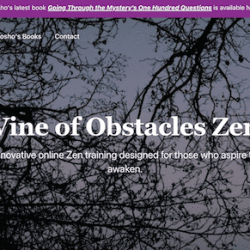
Instead of dodging the question, Port always replied, “I’m a Buddhist priest.” And the student would always say, “Yeah right.”
But after Port’s true identity spread throughout the school, the student became a believer. Now, Port’s students think it’s cool to have a Buddhist priest as a teacher because of the popular media connection between martial arts and Buddhism.
“A co-worker started a rumor that I was a black belt,” he laughed. “The rumor continued on, even though I’m not one at all.”
Port is a Soto Zen Buddhist living in White Bear Lake — which, according to Port, is home to only 14 or 15 practicing Buddhists. Port’s school of Zen — Soto — traces its roots to Japanese farmers. Meanwhile, the other major school of Zen — Rin Zai — is more associated with the Samurai culture, Port said.
“Soto is historically more quiet and peaceful,” Port said. “The tea ceremony and flower arranging is more Soto.”
Originally from Cloquet, Port came to Minneapolis for college and soon read Philip Kapleau’s “The Three Pillars of Zen,” a book he said, gave him a sense of direction in life. In 1977, he began training with the late Dainin Katagiri, a Japanese Zen Buddhist who was the first abbot of the Minnesota Zen Meditation Center in Minneapolis. Port considers himself one of Katagiri’s 12 successors and a member of the 83rd generation of priests after Gautama Buddha, the founder of Buddhism.
“When I met Katagiri it felt confirmed that this is my practice,” Port said.
He went on to receive the “Dharma Transmis-sion,” or permission to teach independently and transmit the Soto Zen lineage, from Katagiri before he died. Now Port teaches Zen practice himself out of his White Bear Lake home, where he added anyone is free to visit to meditate.
Port said becoming a priest meant a level of commitment that he was not sure he was ready for at the age of 32. He explained that a Buddhist priest has the responsibility of passing on the Dharma to successors, which means a lot of teaching and commitment to one’s students.
Now in his 50s, Port is still teaching Zen, still has a shaved head and frequently wears a blue meditation robe. He has written a book about his experiences with Katagiri entitled “Keep Me in Your Heart a While.” A collection of chapters with teachings that are embellished by stories, the book was released in November. Port is holding discussion groups about it throughout January and February.
Buddhist priests are similar to Protestant ministers in that they can have families.
“The family succession culture worked in Japan and is more accepted here,” Port said.
Port compared the commitment of Buddhist priesthood to the commitment of marriage.
“After the commitment the real works begin,” Port said. “To take it and make it your own either happens or it doesn’t.”
Port has two children, ages 12 and 14, who grew up Buddhist. But Port said he’s never pushed his religion on them.
“A lot of Zen involves sitting still,” he said. “Kids should be moving around and doing things. If they find resonance in Buddhism down the road, fine, if not that’s fine too.”
Port’s day job involves teaching Minneapolis public school children with behavioral problems. Sometimes the work can be challenging, as problems and even violent situations can arise. He thinks Buddhism has helped him.
“I’ve been training all these years with a calm mind,” Port said. “It helps me in teaching these kids and not taking things personally.”
After living in Minneapolis for 25 years, Port said he moved to the more quiet community of White Bear Lake because it felt like home. He has open space near his home on Prospect Avenue.
“Nature has always been the biggest thing for me,” Port said.
But Zen doesn’t have to be practiced in nature, he said. It’s practiced by people everywhere, from the San Francisco peninsula to busy Tokyo street corners.
He said his White Bear Lake neighbors are friendly and casual about his appearance and beliefs.
“There is diversity everywhere now,” he pointed out. “In the 70s and 80s, Katagiri would get phone calls telling him that he was going to hell, but people have learned that you have to be tolerant.”
If there is one thing people should understand about Zen Buddhism, Port added, it’s that people should seize the moment in each day.
“We are all going to die,” he said. “The point is what we should do between now and then. By studying what life and death is, we can know that there is nothing to fear in either of them.”
Nicholas Backus can be reached at news@press pubs.com.











